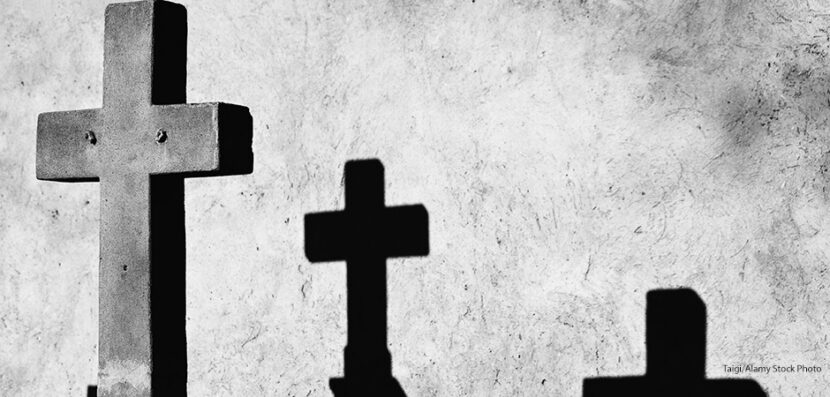- Current Events Nebraska Rejects Winner-Take-All Proposal
- Citizenship Voting Under Age 18
- Citizenship Citizenship in Action
- Democratic Party Biden’s and Trump’s Recent Primary Results
- Elections Trump and Biden Win South Carolina and Michigan Primaries
- Democratic Party Trump and Biden Win Big in Early February Contests

A New Battle in Church vs State
You probably know that the First Amendment to the Constitution requires the separation of church and state. But what exactly does that mean? Legal experts and the courts have been debating this issue for decades. It sounds simple enough: government and religion don’t belong together, according to the Constitution.
Yet “In God We Trust” appears on our money, and the phrase “one nation under God” occurs in our Pledge of Allegiance. Prayers open legislative sessions and public sessions of the Supreme Court. Recently, a giant cement cross at a busy intersection just outside Washington, D.C. has reopened this debate, which will play out in the Supreme Court this week. Here, Election Central takes a closer look at the case.
A Piece of History?
The monument being debated is a forty-foot concrete cross located on a busy median strip in Bladensburg, Maryland. The cross is a World War I memorial, originally erected by 49 mothers in town who had lost their sons to the war. In the 1930s, however, the local parks commission took over the care and maintenance of the memorial, which sits on government-owned land. In other words, the monument is paid for by public tax dollars. And that’s not cheap: currently, the parks commission has budgeted $100,000 in taxpayer dollars for repairs.
Supporters of the cross say that it’s not strictly a Christian or religious symbol. Instead, it is meant to honor the bravery and devotion of those who fought and died in the war. And because it’s been around for nearly a century, they say the monument represents a key piece of history, especially for the descendants of those whose names are carved on it. But those who are against it argue that the government has no business using public tax dollars to fund a religious statue. A group called the American Humanist Association has demanded that the cross be moved to private land and paid for by private money.
The Courts Get Involved
Originally, Bladensburg citizens who were opposed to the cross asked the parks commission to move it or take it down. But the parks commission refused. So they took the case to court and won in the 4th Circuit Court of Appeals. Now, the case will go before the Supreme Court.
It is expected that the Court will allow the cross to stand. This is both because of the newly-conservative makeup of the Court (Trump’s appointment of Brett Kavanaugh tipped the balance to the right), and because the Court historically tends to side with the church in these battles. That’s because there’s no clear standard on what does and does not violate this aspect of the First Amendment.
Instead, the Court has to consider issues such as whether or not allowing this monument to stand would make it appear that the government is endorsing Christianity, or whether or not non-Christians are actually hurt by it, which is highly subjective.
Why Does It Matter?
Supporters of the cross have argued that the monument has stood for nearly a century and that people who want to take it down are overreacting. But those who are against the cross believe that letting monuments like this one stand creates a slippery slope that will eventually erode our First Amendment freedoms and protections.


